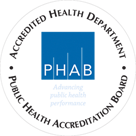On This Page
Diagnosing Chagas
Acute Infection
- Diagnosed by identifying trypomastigotes in blood using microscopy.
- Parasite levels in the blood decrease rapidly within a few months and become undetectable by most diagnostic methods during the chronic phase.
- Detection of T. cruzi DNA is done by polymerase chain reaction (PCR).
Chronic Chagas Disease
To diagnose chronic Chagas disease, healthcare providers detect antibodies against the parasite using serologic tests.
Testing protocol:
- No single test is sufficiently sensitive and specific for diagnosis.
- Use TWO or more tests that detect antibodies to DIFFERENT antigens.
- Common techniques include enzyme-linked immunosorbent assay (ELISA) and immunofluorescent antibody test (IFA).
Assessing the patient's history for infection risks is also helpful.
Blood Donations
There are FDA-approved screening and supplemental or confirmatory tests that screen blood donations for serologic evidence of Trypanosoma cruzi infection. Donors who are positive on the screening test and the supplemental test can no longer donate blood, regardless of any additional testing result. Donors who test positive should contact their healthcare provider. Blood donor screening tests are not appropriate for clinical diagnostic purposes and additional testing is indicated.
In 2017, FDA issued new guidance about how donors who tested false positive on a screening test can be evaluated to see whether they are eligible to donate blood again. Donors who have discordant test results should contact the blood bank regarding this evaluation.
In Mississippi, Chagas disease is a Class 3 Reportable disease. Individual laboratory findings shall be reported by mail, telephone, fax or electronically within one week of completion of laboratory tests. More about reporting →
Treatment options
Antiparasitic treatment is indicated for all cases of acute or reactivated Chagas disease and for chronic T. cruzi infection in children up to age 18. Congenital infections are considered acute disease. Treatment is strongly recommended for adults up to 50 years old with chronic infection who do not already have advanced cardiomyopathy. For adults older than 50 years with chronic T. cruzi infection, the decision to treat with antiparasitic drugs should be individualized, weighing the potential benefits and risks for the patient. Physicians should consider factors such as the patient's age, clinical status, preference and overall health.
The two drugs used to treat infection with T. cruzi are nifurtimox and benznidazole. Benznidazole is approved by FDA for use in children 2–12 years of age and is available from www.benznidazoletablets.com. Lampit® (nifurtimox) is FDA-approved for treatment of children from birth to younger than 18 years and is commercially available for pharmacies to purchase. Side effects are fairly common with both drugs and tend to be more frequent and more severe with increasing age.
Common side effects of benznidazole treatment include the following:
- Allergic dermatitis
- Peripheral neuropathy
- Anorexia and weight loss
- Insomnia
The most common side effects of nifurtimox include the following:
- Anorexia and weight loss
- Polyneuropathy
- Nausea
- Vomiting
- Headache
- Dizziness or vertigo
Contraindications for treatment include severe hepatic and/or renal disease. As safety for infants exposed through breastfeeding has not been documented, withholding treatment while breastfeeding is also recommended. The following table outlines recommended dosage regimens by age group:
| Drug | Age group | Dosage and duration |
| Benznidazole | 2–12 years of age * | 5–8 mg/kg per day orally in 2 divided doses for 60 days |
| Lampit®; (nifurtimox) |
Birth to younger than 18 years of age, weighing at least 2.5 kg** | Body weight greater than or equal to 41 kg: 8–10 mg/kg per day orally in 3 divided doses for 60 days Body weight less than 41kg: |
For questions regarding treatment, contact the MSDH Office of Epidemiology at 601-576-7725.
* Benznidazole is FDA-approved for the treatment of Chagas disease (American trypanosomiasis) caused by Trypanosoma cruzi in pediatric patients 2–12 years of age. Use of benznidazole to treat a patient outside of the FDA-approved age range of 2–12 years is based on clinical diagnosis and decision by a treating physician under practice of medicine.
** Lampit® (nifurtimox) is FDA-approved for treatment of Chagas disease (American trypanosomiasis) caused by Trypanosoma cruzi in pediatric patients from birth to younger than 18 years (weighing at least 2.5 kg). Use of nifurtimox to treat a patient outside of the FDA-approved age range of birth to younger than 18 years is based on clinical diagnosis and decision by the treating physician under practice of medicine.
Use of trade names is for identification only and does not imply endorsement by the Mississippi State Department of Health.
Care precautions
About 20–30% of people with chronic Trypanosoma cruzi infection eventually develop clinical disease, predominantly cardiac disease. Cardiac disease usually begins with conduction abnormalities such as right bundle branch block and/or left anterior fascicular block, which may be followed years later by dilated cardiomyopathy. Later cardiac disease is sometimes accompanied by apical aneurysm and thrombus formation.
Less frequently, patients with Chagas disease experience gastrointestinal disease (megasyndromes). Once the characteristic pathology is established (e.g., dilated cardiomyopathy, megaesophagus), antiparasitic treatment will not reverse it.
Evaluation and Treatment Resources
For more detailed information on evaluation and treatment, the following links provide free access to review articles:
- Evaluation and Management of Congenital Chagas Disease in the United States Morven S. Edwards, Kelly K. Stimpert, Stephanie R. Bialek and Susan P. Montgomery, Journal of the Pediatric Infectious Diseases Society, April 24, 2019 piz018, https://doi.org/10.1093/jpids/piz018
- Evaluation and Treatment of Chagas Disease in the United States: A Systematic Review (JAMA 2007: 298:2171-81)
- Screening and Treatment of Chagas Disease in Organ Transplant Recipients in the United States Recommendations from the Chagas in Transplant Working Group (American Journal of Transplantation, 2011: 672-680)
Clinical Considerations for Congenital Chagas Disease
Care and treatment considerations
The risk of transmission from mother to child is thought to be low, with an estimated 1–5% of infants born in the United States to mothers with Chagas disease infected with T. cruzi. This translates to between 63 and 315 infected infants born every year.
Most babies born with congenital Chagas disease show mild or no symptoms. However, if untreated, the infection will last a lifetime, and these infants risk developing symptoms of chronic Chagas disease later in life. Identification and testing of infants at risk of infection is critical to prevent Chagas disease in the United States.
Signs in infants
Infants with congenital Chagas disease may present with:
- Low birth weight
- Prematurity
- Low Apgar scores
- Hepatosplenomegaly
- Anemia
- Thrombocytopenia
Though rare, severe disease in infected infants can include:
- Meningoencephalitis
- Pneumonitis
- Anasarca
- Death
Screening for women at risk
Healthcare providers should screen women at risk for Chagas disease before or during pregnancy. Women who have lived in Mexico, Central America and South America are at greatest risk for Chagas disease.
Routine testing of pregnant women in the U.S., is not generally necessary unless there is a concern for exposure to triatomine bugs.
Infant diagnosis
An infant should be evaluated for congenital Chagas disease if:
- The mother has been diagnosed with Chagas disease.
- The infant shows signs suggestive of Chagas disease.
- The mother is from an endemic area and has not been screened.
Diagnosing infants involves detecting the Trypanosoma cruzi parasite in blood smears and/or PCR tests for T. cruzi in the blood.
Because the infected mother's antibody to T. cruzi can persist in her infant for up to 9–12 months, serologic testing is not useful for detecting congenital infection in newborn infants. Over time, the mother's antibody will disappear and children who are uninfected should be antibody negative by 9–12 months of age.
Treatment
All congenital Chagas disease cases in infants should be treated. The cure rate among infants treated in the first year of infection is >90%.
Under 18 years of age
- Benznidazole is approved by FDA for use in children 2–12 years of age and is commercially available at www.benznidazoletablets.com.
- Lampit® (nifurtimox) is an FDA-approved for treatment of children from birth to younger than 18 years and is commercially available for pharmacies to purchase from several drug wholesalers.
Siblings of an infant diagnosed with congenital Chagas disease should also be tested for the disease.
Resources
- Algorithm for evaluation of Chagas disease in pregnant women CDC
- Algorithm for evaluation of congenital Chagas disease: infant < 3 months of age CDC
- Algorithm for evaluation of congenital Chagas disease: infant = 3 months of age CDC
CME Opportunity
- Chagas Diseases in the U.S. CDC What United States health care providers need to know about Chagas disease

